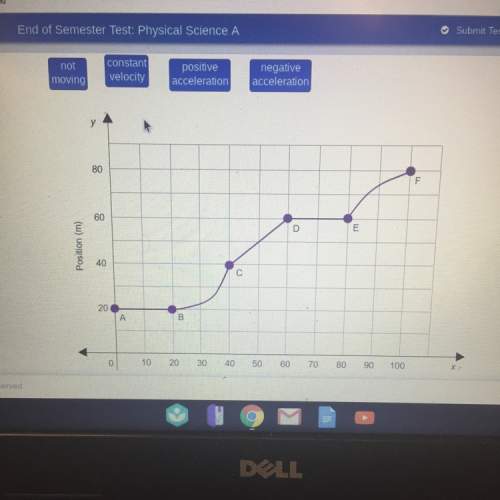
Physics, 02.11.2020 18:40 stefani5519
3 lines intersect. A horizontal line with points G, N, K intersects a vertical line with points J, N, M at point N and forms a right angle. The third line contains points H, N, L and intersects the other lines at N. It is diagonal and cuts through angles J N G and M N K. Which statements are true regarding the diagram? AngleGNH and AngleHNJ are complementary. AngleJNK and AngleKNL are supplementary. AngleKNL and AngleLNM are complementary. mAngleHNK + mAngleKNL = 180° mAngleMNG + mAngleGNH = 90°

Answers: 3
Another question on Physics

Physics, 21.06.2019 22:50
A23 kg log of wood begins from rest, 300 m up a sluice (a water track used to transport logs, think of it as an inclined plane with negligible friction) inclined at 20° to the horizontal. after it reaches the flat waterway at the bottom it collides elastically with a 100 kg block of wood initially at rest near the base of the incline. (a) how long does it take the 23 kg log to travel down the incline? (b) what is the speed of the 23 kg log at the bottom of the incline? (c) what are the velocities of both blocks of wood after the collision? (d) what is the total kinetic energy before the collision? (e) what is the kinetic energy of the 23 kg log after the collision? (f) what is the kinetic energy of the 100 kg block of wood after the collision? (g) what is the total kinetic energy after the collision? (h) compare the total initial and total final kinetic energies. is this consistent with what you would expect for elastic collisions? explain!
Answers: 1

Physics, 21.06.2019 23:30
Which lists the main components of darwin’s theory of evolution? a. random mutations drive evolution; the evolution of a population happens slowly; organisms have common ancestors; organisms do not change. b. natural selection drives evolution; the evolution of a population happens slowly; organisms have common ancestors; organisms change over time. c. natural selection drives evolution; the evolution of a population happens rapidly; organisms have common ancestors; organisms change over time. d. random mutations drive evolution; the evolution of a population happens rapidly; organisms have common ancestors; organisms do not change.
Answers: 1

Physics, 22.06.2019 07:40
How are series and parallel circuits simililar? both have multiple paths for electrons to travel. both require resistors in their circuits. both require a switch to complete the circuit. both have at least one path for electrons to travel.
Answers: 3

Physics, 22.06.2019 14:00
Una carga puntual de 3 x 10-6 c se coloca a 12 cm de una segunda carga puntual de - 1,5 x 10-6 c. calcular la magnitud fuerza eléctrica entre las cargas
Answers: 2
You know the right answer?
3 lines intersect. A horizontal line with points G, N, K intersects a vertical line with points J, N...
Questions







Mathematics, 25.07.2019 18:30




Mathematics, 25.07.2019 18:30

Social Studies, 25.07.2019 18:30



Business, 25.07.2019 18:30









